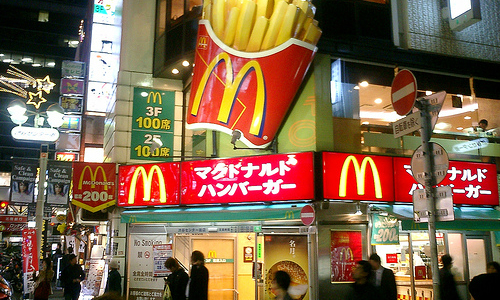For international brands, connecting with consumers in new markets can be a serious challenge. Consumers in different countries and regions want different things from their products and services, and so brands need to adapt. This, however, must be reconciled with the need for recognisability and stability in an increasingly globalised world. What are the problems that international brands face when trying to reach local markets, are how can they overcome these potential pitfalls?
The biggest problem facing international brands is differing consumer habits. Sometimes consumers simply have different tastes. If people from one country typically have no interest in bitter flavours, selling them 85% dark chocolate is going to prove difficult regardless of branding. It’s not just about tastes, but behaviours too. Kenyans very rarely eat cereal for breakfast, so how could a brand like Weetabix convince Kenyans to try their product?
Adapting your strategy so that it takes into account local tastes and habits is the first, and most basic, rule that an international brand needs to heed. Unfortunately, it’s easier said than done. Variety in consumer behaviours is notoriously difficult to understand, and often will only be apparent to people extremely familiar with the culture in question. For example, in some countries such as Greece, flavour is gendered, with savoury flavours seen as masculine and sweet flavours as feminine. This would make it very difficult for a sweet confectionery brand to market to men in Greece, as there is a cultural expectation that they simply will not enjoy your product. Such knowledge is far from widely available, and may only become apparent to a brand after expensive consumer testing or failed product launches.

In the face of this patchwork quilt of local consumer habits and expectations, how does an international business adapt its strategy when it comes to branding? For these international brands, there is a conundrum to overcome. Recognisability and familiarity are cornerstones for a major brand looking to access multiple markets at once. Think McDonald’s. Part of their global success is rooted in the idea that regardless of where you are, you know exactly what to expect from the restaurant experience. However, to truly connect with consumers, McDonald’s needs adapt so that it doesn’t feel strange and foreign, offering products that suit local tastes. International brands, therefore, need to strike a balance between global recognisability and local expectations. Often known by the horrible portmanteau ‘glocalisation’, this careful balancing act can be achieved in a number of ways.
 (Image credit: Japan Daily Press)
(Image credit: Japan Daily Press)
For many brands, this can mean subtly altering the brand experience. In a recent interview with PSFK, Indidesign founder Beatrice Girelli discussed the importance of this process for hotel chains. Hotels like the Hyatt and Hilton have a draw partly because as a traveller, you know what you’re getting. However, travellers also want to feel like they’re experiencing the local scene while staying there, and so the hotels must adapt their architecture and decor subtly to fall in line with both international luxury standards and expectations of local style and custom. Something as simple as the right bedspreads can help tweak the brand experience to feel local, and yet still familiar.
Adaptations to the way your brand looks and talks in different markets is another effective strategy if it is properly balanced. Peroni, for example, is arguably the most recognisable beer brand in Italy, and is often regarded as a fairly run-of-the-mill lager. When reaching out to other Western markets, however, the brand has spotted a niche for premium lager, and successfully remodelled themselves as a classy, luxury alternative to your Carlings and Budweisers. Peroni was able to reimagine themselves in the eyes of other European consumers through genius brand positioning that held onto their original Italian brand essence, but adapted it to fit a niche in a different market.
 (Image credit: Peroni)
(Image credit: Peroni)
The third, and perhaps most effective, path to reaching local audiences is to change consumer behaviours, effectively ‘teaching’ them to enjoy your product. What better way to adapt to different consumer habits than to fundamentally change these habits? Giles Turrell, chief executive of Weetabix, has noted how his brand managed to secure 70% of Kenya’s cereal market because they were the only brand to try to understand the subtleties of this market. Kenyans needed to be convinced that cereal in a bowl with milk was a viable breakfast option, so Weetabix’s campaigns have focused on this concept. Once convinced, Kenyans appeared to associated breakfast cereal not with sweet Coco Pops or Lucky Charms, but with with Weetabix, thus securing a huge share of the market for the brand.
 (Image credit: Weetabix EA)
(Image credit: Weetabix EA)
Regardless of how it is achieved, international brands need to be acutely aware of local sensibilities when trying to expand into new markets. Striking the right balance between adaptation and recognisability is the key to success. If a brand is able to walk this tightrope, they leave themselves in pole position to generate brand loyalty that can cross time zones.
